 If you still believe that the Hawaiian folk costume consists only of coconut cups and banana leaves, this article may surprise you. Locals did produce handmade fabric. And, be the way, the process was complicated and very long. The traditional Hawaiian fabric is made from a special tree bark. To think that you can make fabric out of the bark of a tree is amazing. That was the fabric of the Hawaiians – that was their kapa cloth.
If you still believe that the Hawaiian folk costume consists only of coconut cups and banana leaves, this article may surprise you. Locals did produce handmade fabric. And, be the way, the process was complicated and very long. The traditional Hawaiian fabric is made from a special tree bark. To think that you can make fabric out of the bark of a tree is amazing. That was the fabric of the Hawaiians – that was their kapa cloth.
One of Hawaiian craftswomen explains the secrets and peculiarities of Hawaiian kapa cloth making. Her name is Wendeanne Ke'aka Stitt and she’s a master quilt maker and a maker of Hawaiian kapa cloth.
What is a kapa?
Kapa is a Hawaiian cloth or wauke with geometric shapes and patterns. Historically, the wauke or paper mulberry tree which is used to make the kapa cloth was grown by Hawaiian men, while women turned its bark into fine fabric and sewed clothing.
There are several steps of making a kapa cloth:
- beating – square beaters with various patterns of ridges are used to make the bark fibers softer and thinner;
- watermarking – during this process wooden beaters are also used but their purpose is to stamp prints into a thin layer of wauke;
- designing – different designs are painted into the kapa cloth with a help of wooden stamps. Artisans use acrylic paints or natural dyes.
“This is a fifth of a length of a paper mulberry tree which is used to make Hawaiian kapa. There's the constant quest for perfection. It can feel like silk at the end – it can also feel like burlap, – but on a good day, it feels like silk”, says Wendeanne Ke'aka Stitt.
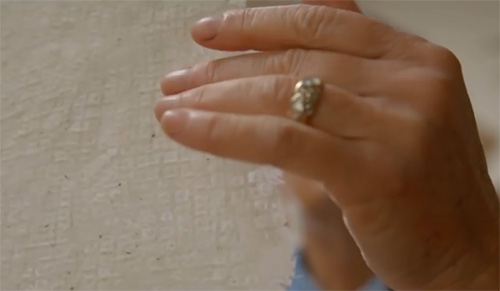
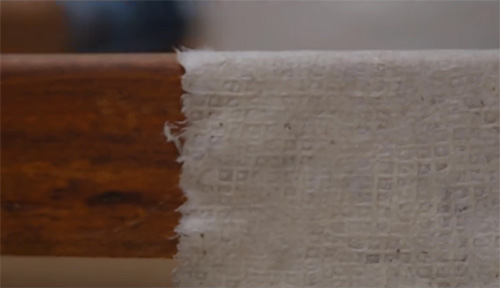
Delicate kapa cloth before dyeing
Making a kapa cloth was a communal thing that women did. They would all gather in the “kapa house”, they would pound kapa, they would sing, they would chant, they would gossip, they would laugh.
Kapa was widely used in Hawaii to make clothes. Today, people prefer factory produced clothing to kapa because it takes too much time and effort to make this traditional fabric. But some people still use kapa sometimes. And these days, when Hawaiians pass away, a piece of kapa is laid over their body in their coffins.
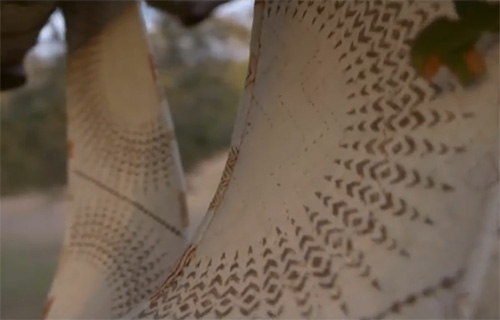
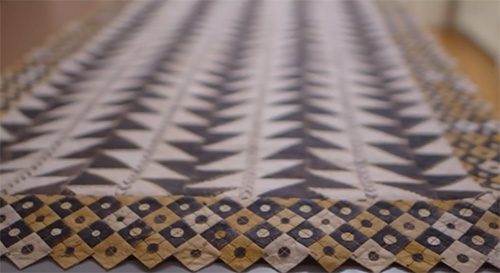
Patterned kapa cloth
This traditional craft is kept till today – there are many artisans who continue to make a kapa cloth. And they mostly use simple traditional tools made from natural materials, like wood, bone, stone, etc. The fabric dyes used by the craftswomen are often natural as well.

Wooden beaters used to make kapa cloth
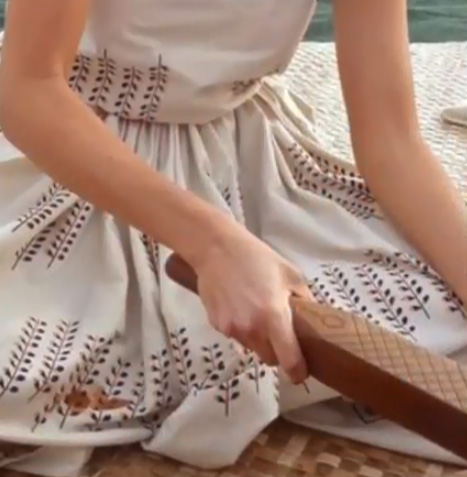
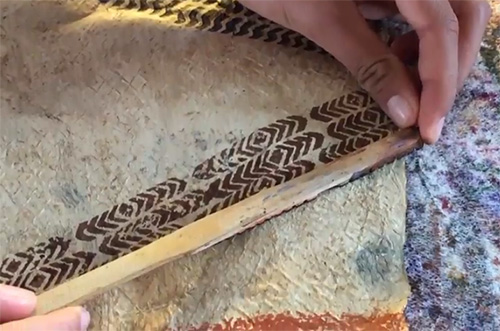
Designing kapa with wooden stamps and dyes
“California black walnuts make the beautiful black brown dye. I use real plant dies and vegetable dyes. It's important to pass the tradition along in the way that it was supposed to be done in the beginning. I don't take shortcuts – that's probably one of the biggest things. It's not being true to the kapa. Now I say that I make quilts out of kapa cloth which nobody does. And people would say that's not being true to the tradition. But that's true to keeping the artform moving and evolving”, adds Wendeanne Ke'aka Stitt.

Patterned kapa cloth
(c)


